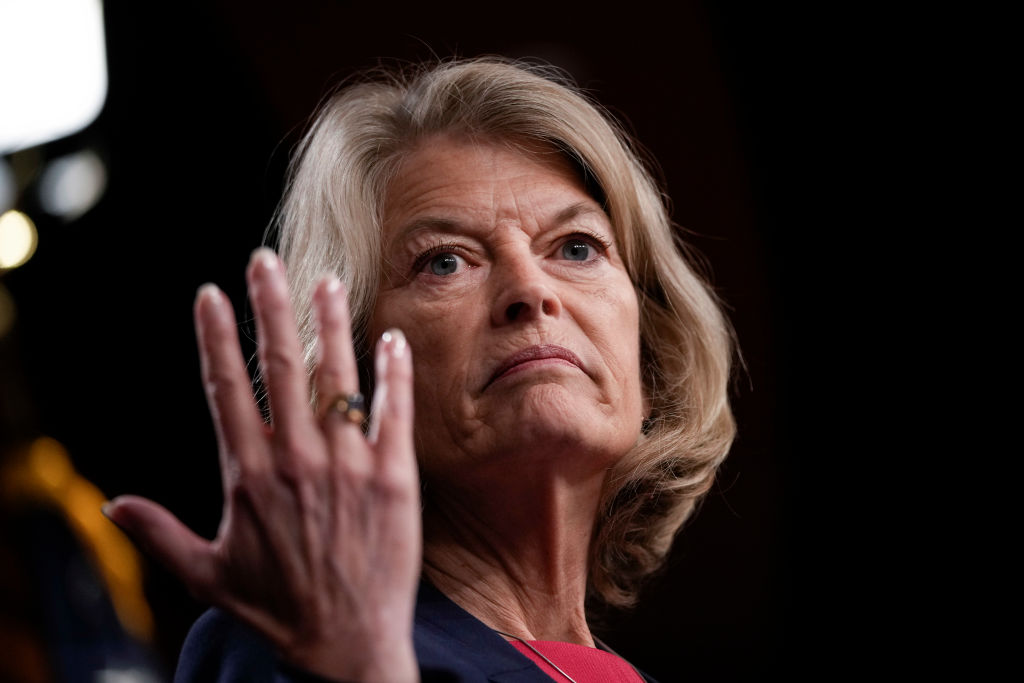
WAUKESHA, WISCONSIN – AUGUST 05: Former President Donald Trump speaks to supporters during a rally on August 05, 2022 in Waukesha, Wisconsin. Former President Trump endorsed Republican candidate Tim Michels in the governor’s race against candidate Rebecca Kleefisch, who is supported by former Vice President Mike Pence. (Photo by Scott Olson/Getty Images)
With the latest primary results coming in from Wyoming, it seems the Republican Party is one definitive step closer to shedding its former skin and embracing a more Trumpian America First stance. With candidates supported by former President Donald Trump leading the pack, Representative Liz Cheney and Senator Lisa Murkowski both felt the backlash of GOP voters.
The Liz Cheney Phoenix?
Despite the left-leaning media cheering Cheney’s “strategizing” to maintain her seat, when the results landed, they landed hard. Polls anticipated that the incumbent representative would lose by roughly 20 points; the final tally was a far more damning indictment.
With 99% of the vote counted, Trump-backed challenger Harriet Hageman won a startling 66.3% of the vote compared to Cheney’s 28.9%. A 37% loss was beyond even the most far-reaching predictions. The three other candidates failed to muster more than 3% each. Hageman will go on to face Democrat contender Lynnette Grey Bull in November. However, Democrat hopefuls for the at-large congressional district have not pulled in more than 31% of the overall ballots since 2008, when they were riding Barack Obama’s wave.
Trump was swift to offer his opinion on Cheney’s loss, posting on Truth Social:
“I assume that with the very big Liz Cheney loss, far bigger than had ever been anticipated, the January 6th Committee of political Hacks and Thugs will quickly begin the beautiful process of DISSOLUTION? This was a referendum on the never ending Witch Hunt. The people have spoken!”

(Photo by Alex Wong/Getty Images)
In Cheney’s concession speech, she noted that “Abraham Lincoln was defeated in elections for the Senate and House before he won the most important election of all.” Such talk echoes speculation that she is plotting a presidential run in 2024. The question the apparent big donors waiting in the wings need to ask themselves is whether a politician who cannot secure the public’s support in her home state can really rise from the political ashes a phoenix reborn and ready to do battle with her own party?
The Wyoming Gubernatorial
As expected, incumbent Republican Governor Mark Gordon won his near-certain shot at holding on to the mansion for another four years with a decisive 61% victory. His closest GOP rival, retired naval officer Brent Bien, managed a good showing of almost 30%.
In November, Gordon will do battle with Democrat contender Theresa Livingston, who secured her nomination with an impressive 71%. However, due to how red Wyoming is, her 71% win totaled roughly 5,000 votes compared to Gordon’s 100,000. This is not considered a competitive race by any standard.
Alaska Ranked Choice Speculation
Thanks to a 2020 ballot measure on how elections are conducted in the Last Frontier, the latest primary results for Alaska’s races are still undecided. Because final tallies are not announced until all overseas votes are collected, the public will have to wait until after August 31. However, parsing the numbers based on the votes already collected and party support can give an idea of how the November election will play out.
As in California, Louisiana, and Washington, all candidates now run on the same ballot regardless of party affiliation. Instead of the top two candidates going forward to November’s contest, though, it will be the top four. This applies to all statewide races. Also, ranked-choice voting is now the norm, and as such, voters order the candidates from their most preferred to their least. So what does this mean for the House, Senate, and gubernatorial contenders?
The Murkowski Manouvers

(Photo by Drew Angerer/Getty Images)
Of the seven GOP senators who voted to impeach Donald Trump, only Lisa Murkowski is facing the electorate in this cycle. The 45th president backed former Alaska Department of Administration Commissioner Kelly Tshibaka to take the seat.
With 52% of the estimated vote counted, Murkowski has a slim lead over Tshibaka, 42.7% to 41.4% – a difference of roughly 1,600 votes. The third and fourth place finishers, Patricia Chesbro (D) and Buzz Kelley (R) have 6.6% and 2.2%, respectively. The close margin between the top two contenders means that it matters to whom Alaskans have granted their second choice placement. That a Republican will prevail is a foregone conclusion, but will Democrat voters give their second choice to the incumbent or to a Trump-backed challenger?
Close races are a staple part of Murkowski’s political career; she is the first candidate to ever win three US Senate elections with pluralities but no majorities. She may well extend this historic record in November.
Can Palin Persist?
Making a re-entry to Alaska’s political stage is former Republican Governor Sarah Palin. She is hoping to both take on the remainder of the late Rep. Don Young’s term and be in a position to hold on to the seat in the November election. If no candidate secures more than 50% of the vote, ranked-choice voting begins.
Based on 60 plus percent of the vote being counted, the numbers so far give the lead to Democrat hopeful Mary Peltola on 34.8%, followed by Palin on 31.7%, third place for fellow GOPer Nick Begich on 27.1%, and fourth place so far is also a Republican, Tara Sweeney, who has 3.4%. Due to two reasonably popular GOP candidates, no contender looks likely to break the magic 50%, meaning second and third-choice votes will make a difference.
 Despite the internet excitement surrounding Peltola’s early lead, political watchers should be asking themselves two questions. First, how likely are Begich supporters to list a Democrat as their second-place choice? And, will Democrats place Begich second to stop a Trump-endorsed Palin from making a political comeback? If the answer to the first question is “not very,” then Palin will likely win. If the answer to the second question is “probably,” then Peltola actually has a chance of winning.
Despite the internet excitement surrounding Peltola’s early lead, political watchers should be asking themselves two questions. First, how likely are Begich supporters to list a Democrat as their second-place choice? And, will Democrats place Begich second to stop a Trump-endorsed Palin from making a political comeback? If the answer to the first question is “not very,” then Palin will likely win. If the answer to the second question is “probably,” then Peltola actually has a chance of winning.
Latest Primary Results Paint a Stark Picture
Once again, the influence of Donald Trump, and more specifically the America First movement, is being felt across the country. It is becoming clear that large numbers of Republican primary voters are unwilling to back the more establishment candidate and are opting for a continuation of the 2016 political earthquake. At least for now, the Cheney dynasty is done, and it will take more than a little luck for Murkowski to retain her seat. The anticipated red wave may not be of tsunami proportions, but the writing is, either way, on the wall: Republican voters, win or lose, are committed to changing the very nature of their party.
Check out Whatfinger.com, the #1 Alternative to the Drudge


